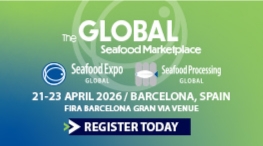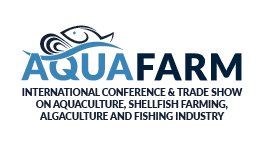CONVENIENCE IS KEY
Pond aquaculture has a deep-rooted history in Central and Eastern Europe, where fish production methods have largely remained unchanged for centuries. In this region, pond-raised fish—especially common carp—is typically harvested in the autumn and early winter, with the majority reaching the market around Christmas. Traditional practices have emphasised seasonal supply and the sale of live fish, with limited focus on diversifying products or extending availability year-round.
This article was featured in Eurofish Magazine 6 2024
Shifting consumer preferences and evolving market dynamics are pushing the pond aquaculture sector toward change. Consumers increasingly expect fish products to be available consistently throughout the year and in forms that fit modern lifestyles. Many people, particularly younger consumers, prefer meals that are convenient to prepare, as they tend to spend minimal time cooking. When they find a product they enjoy, they expect it to be readily available; otherwise, it can easily fall off their radar. With this in mind, pond fish farmers are increasingly adopting a value chain approach that integrates processing and marketing innovations to better meet market demands, rather than relying solely on traditional production cycles.
The pond aquaculture sector is also facing economic and environmental pressures that require greater flexibility. Rising costs for feed, electricity, and transportation are challenges that call for adaptable production methods. Additionally, demand-side development is critical. Fish from pond aquaculture is nutritious and has the potential to adapt well to climate change, yet these benefits mean little if consumers aren’t interested in eating it. Therefore, market demand must grow alongside advancements in production to ensure a sustainable future for the sector.
Overcoming market barriers and perceptions around common carp
In European pond aquaculture, common carp is the primary species raised, especially in Central and Eastern Europe. Despite its nutritional value and environmental benefits, carp faces certain perceptions that limit its appeal to consumers. It’s often seen as “bony” and having a “muddy” taste, yet these are misconceptions that more flexible, modern production techniques are aiming to overcome. Carp is actually a nutritious, flavorful, and environmentally friendly option when raised with sustainable methods.
The pond fish sector is beginning to recognize the importance of a year-round supply of high-quality carp products that cater to evolving consumer tastes. Innovations in processing, like removing intramuscular bones from carp, are helping to make this fish more appealing to consumers. Furthermore, consumers in Eastern Europe are generally more price-sensitive than those in Western Europe, making it essential for producers to offer both premium options and affordable choices that fit within a range of budgets. To retain relevance in both markets, the pond fish sector must prioritize both cost-effectiveness and quality while ensuring products are readily available and easy to prepare.
Expanding product diversity for changing consumer preferences
The European freshwater aquaculture sector is adapting to new consumer preferences by diversifying product offerings. Many younger consumers, who often have little time or inclination to prepare complex meals, are more likely to choose quick, convenient food options. In response, fish producers are developing easy-to-prepare, ready-to-eat carp products that fit seamlessly into fast-paced lifestyles. Additionally, organic and boneless carp options are being introduced to target premium markets, while traditional “table carp” (1.5-3.0 kg) remains available for more conventional consumption habits.
Some producers are also adopting innovative production methods that combine recirculating aquaculture systems (RAS) with traditional ponds, enabling the production of “portion carp” (500-600 g) and “XL carp for angling” (4-5 kg). This diversification allows producers to cater to a broader range of consumer needs—from family dinners to recreational angling markets—thereby expanding the consumer base for carp. A reliable, diverse selection of carp products is key to meeting consumer expectations for consistent availability. If consumers enjoy a product, they’re more likely to become repeat buyers, but only if that product remains on store shelves. To build lasting demand, the sector must adapt to ensure that desirable products are always accessible to the public.
Market growth through value chain concept and flexibility
A more consumer-focused approach is essential for expanding demand for pond-raised fish. Many pond fish farmers are now adopting a value chain model that prioritises processing, distribution, and consumer engagement. This model not only enables producers to better understand market demand but also supports greater resilience in the face of external challenges, such as rising operational costs.
In a rapidly changing environment, flexibility has become crucial. The sector must be prepared to respond to fluctuating prices for feed, electricity, and transportation, which impact the entire aquaculture value chain. By leveraging value chain concept, producers can explore alternative sales channels, like direct sales and partnerships with tourism or public institutions, to stabilize market access and broaden the scope of product distribution. These strategies can help mitigate the impacts of rising costs while supporting a steady revenue stream for fish producers.

Promotional efforts like Poland’s “Pan Karp” and Hungary’s “Fish Friday” are examples of campaigns that have aimed to increase consumer interest in pond-raised fish. Yet for these efforts to be successful, they must go hand-in-hand with product development and reflect real consumer needs. Promotions should focus on educating consumers about the environmental benefits of pond aquaculture, the convenience of ready-to-eat carp products, and the availability of affordable options. By promoting the value of carp as a sustainable, healthy, and tasty choice, these campaigns can help reshape consumer perceptions and drive demand.
Targeted marketing and niche opportunities
Beyond traditional markets, the pond aquaculture sector can tap into niche opportunities. New markets in countries and regions with low fish consumption offer potential, as do ethnic communities and recreational angling sectors. In addition, European consumers are increasingly valuing environmentally friendly products, providing a unique opening for pond aquaculture to position itself as a sustainable choice.
Promotional campaigns should also focus on young consumers, who are more likely to try new products and adopt environmentally conscious choices. To make a lasting impact, these campaigns should highlight the environmental benefits of pond-raised fish, particularly carp, which is produced in line with circular economy principles and supports biodiversity in pond ecosystems. Encouraging younger generations to incorporate fish into their diets can help build a stronger, more sustainable consumer base for pond aquaculture.
Sustainability and innovation in production
The future of freshwater aquaculture in Europe relies on a balance of sustainable practices and innovative solutions. By adopting advanced production systems like RAS combined with traditional ponds, producers can optimize resource use and minimize waste. This approach aligns with Europe’s growing focus on sustainable food systems, in which production, processing, and distribution are designed to support both environmental and consumer needs.
Processing advancements also play a critical role in the sector’s evolution. New technologies allow for the production of boneless carp products and ready-to-eat options, making carp more appealing to a broader audience. These innovations not only address consumer demand for convenience but also support the long-term goal of reducing waste and optimizing resource use in aquaculture. Sustainable practices in freshwater fish production can also help address the challenges posed by climate change, as pond aquaculture has the potential to adapt to varying environmental conditions and maintain stable production levels.
Reinventing common carp for younger consumers
The European pond aquaculture sector, especially for common carp, stands at a pivotal moment. As it faces rising operational costs and shifting consumer preferences, a flexible, innovative approach is essential. The value chain concept, diversification of products, and focus on sustainable practices will allow the sector to thrive in a changing market.
With younger consumers seeking convenience, affordability, and environmental responsibility in their food choices, pond aquaculture has the opportunity to reinvent common carp as a modern, healthy option that fits contemporary lifestyles. By strengthening market demand through consistent product availability, education, and targeted promotions, the pond fish sector can secure its place in Europe’s sustainable food future.
Ultimately, aligning production advancements with consumer needs will be key. By building a resilient value chain, addressing cost pressures, and prioritizing both product diversity and availability, the pond aquaculture sector can ensure that common carp remains a relevant and desirable choice for generations to come.
Emese Bozanne Bekefi, HAKI,
Bozanne.Bekefi.Emese@uni-mate.hu









